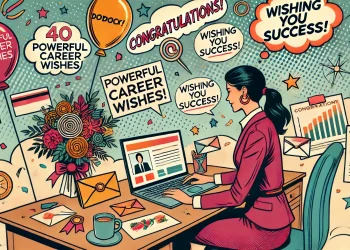No products in the cart.
Highlighting the Skills Gap: A Contest for Skilled Labor
A recent contest in China emphasizes the urgent need for skilled labor in the economy. As industries evolve, so do the skills required to thrive.
Beijing, China — As the sun rose over the sprawling metropolis of Beijing, a palpable energy filled the air. It was the day of a contest designed not just for glory, but to spotlight a pressing issue that has reached crisis proportions: the urgent need for skilled labor across various sectors. In an age where technology evolves at breakneck speed, the gap between job requirements and workforce capabilities is wider than ever.
This contest, organized by local educational institutions and industry leaders, aimed to bridge that gap. Participants, ranging from eager students to seasoned professionals, showcased their abilities in various fields, including technology, engineering, and creative arts. Each competitor represented not just their own aspirations, but the collective hopes of an economy striving to keep pace with the demands of a rapidly changing world.

As the competition unfolded, it became clear that the stakes were high. According to a recent report by the World Economic Forum, the global skills gap could leave 85 million jobs unfilled by 2030. And it’s not just a number—it’s a reality that affects individuals, families, and entire communities. In Beijing alone, where innovation is a way of life, the emphasis on cultivating a skilled workforce is paramount.
 Business
BusinessMastering Communication: Techniques for Impactful Ideas
Unlock the secrets of impactful communication with techniques that ensure your ideas are remembered and acted upon.
But what does this skills gap mean for the future of work? As industries pivot towards automation and digitalization, the demand for tech-savvy professionals continues to soar. The contest served as a microcosm of this shift, illustrating the urgent need for educational reform that prioritizes practical, hands-on experience alongside traditional learning.
But what does this skills gap mean for the future of work?
Vocational training programs, once the backbone of career development, are now often overshadowed by the allure of four-year degrees. However, as evidenced by the contest, there is a growing recognition that skills-based training can lead to equally rewarding and sustainable career paths. Participants who excelled in practical skills, such as coding or robotics, were often met with the kind of enthusiasm usually reserved for rock stars.
Moreover, the role of online education platforms cannot be overlooked. With the rise of digital learning, individuals now have unprecedented access to resources that allow them to acquire new skills from the comfort of their homes. Platforms like Coursera and Udacity have democratized education, enabling anyone with a passion for learning to gain expertise in sought-after fields.
 Professional Development
Professional DevelopmentMaharashtra’s SIRF Initiative: A Digital Leap for University Rankings
Maharashtra's SIRF initiative aims to enhance university rankings through a new digital dashboard, impacting education and innovation.
Read More →Yet, as the contest highlighted, there remains a disparity in access to these resources. Not everyone has the same opportunities to hone their skills, particularly in underserved communities. Bridging this divide requires concerted efforts from governments, educational institutions, and private sector players to invest in inclusive training programs that cater to diverse populations.
Looking ahead, the implications of this contest extend beyond the realm of competition. The urgency to address the skills gap calls for a multi-faceted approach. Partnerships between businesses and educational institutions are essential to ensure that curricula remain relevant and aligned with industry needs. Furthermore, fostering a culture of lifelong learning is critical. The most successful professionals of the future will not only be those who acquire skills but those who are willing to adapt and evolve as the landscape shifts beneath them.
The most successful professionals of the future will not only be those who acquire skills but those who are willing to adapt and evolve as the landscape shifts beneath them.
As we move forward into an increasingly complex job market, the lessons learned from this contest resonate deeply. It is a clarion call for all stakeholders to recognize the value of skilled labor, to invest in the future of work, and to cultivate a workforce that is not just prepared to fill jobs, but to innovate and lead in a rapidly changing world. The future is bright for those willing to embrace change and invest in their own skills, and the time to act is now.
 Artificial Intelligence
Artificial IntelligenceAI-Driven Entrepreneurship: A Catalyst for Growth in Emerging Markets
AI is reshaping the entrepreneurial landscape in emerging markets, paving the way for inclusive growth and innovation.
Read More →










